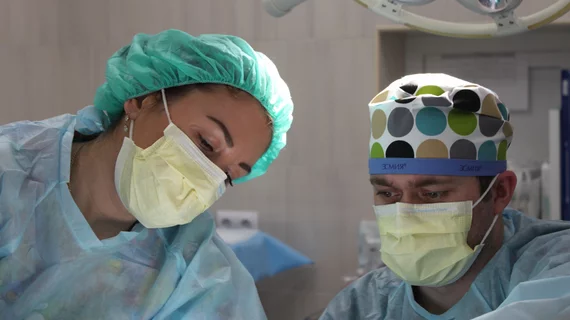Catheter-related thrombosis remains a problem—even when different midline catheters are used
Midline catheters (MCs) designed with different antithrombogenic mechanisms are still associated with high rates of symptomatic catheter-related thrombosis (CRT), according to new research published in JAMA Network Open.
“Symptomatic CRT is one of the most serious complications of catheter insertion,” wrote first author Amit Bahl, MD, MPH, of Beaumont Hospital in Royal Oak, Michigan, and colleagues. “Thrombosis interrupts and delays venous therapy, increases cost of care, and can lead to significant adverse patient outcomes, such as bloodstream infection, pulmonary embolism and post-thrombotic syndrome.”
Could the risk of symptomatic CRT be mitigated if an alternative MC with a distinct antithrombotic mechanism was used instead? Bahl et al. aimed to find out, performing a randomized clinical trial at a large, high-volume center in the United States.
In total, 94 patients were treated with a 4F antithrombotic MC—this was the study’s MC-AT group. An additional 97 patients were treated with a 4.5F antithrombotic and antimicrobial MC—this was the study’s MC-AT-AM group.
Ultrasound guidance was used to insert the catheters. All catheters used in the analysis had been approved by the FDA.
Overall, symptomatic midline CRT was seen in 7.5% of patients in the MC-AT group and 11.3% of patients in the MC-AT-AM group. Rates of deep vein thrombosis were nearly identical in the two groups, and no catheter-associated bloodstream infections were seen in either group. There was one pulmonary embolism, in a patient from the MC-AT group.
Also, the authors added, premature catheter failure was seen in 23.4% of patients in the MC-AT group and 20.6% of patients in the MC-AT-AM group.
“This randomized clinical trial found no statistically significant difference in the incidence of CRT between study catheters despite a difference in the antithrombogenic mechanism,” the authors wrote. “Both study catheters demonstrated reduction of thrombosis in vitro or in vivo, but those results did not translate to patients in this clinical trial.”
The full study is available here.

